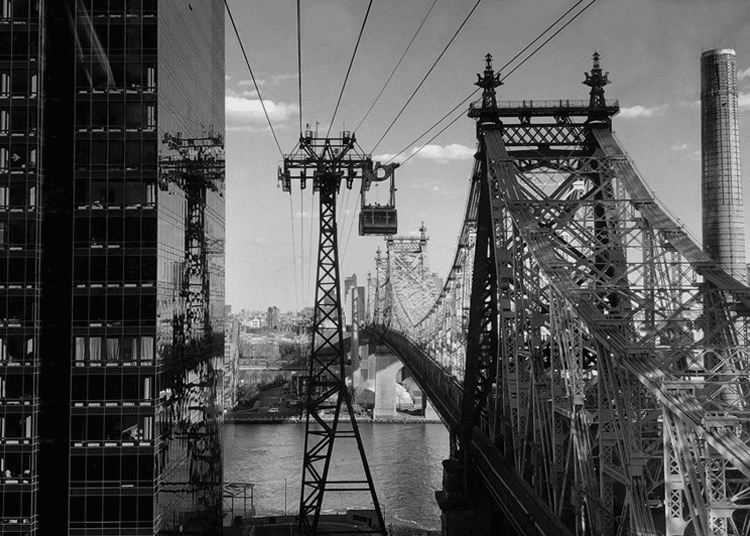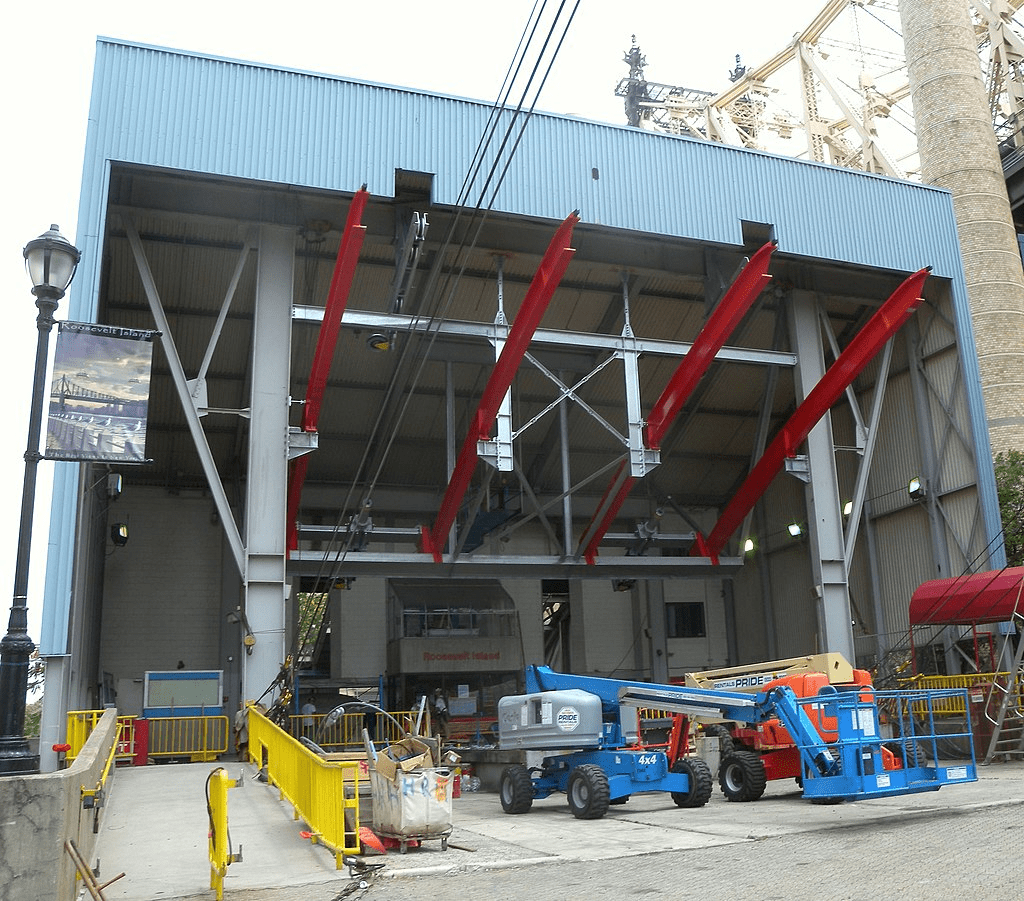This article is about the first aerial tramway in the USA, capable of traveling 2,470 feet (750 m). Read more about its foundation, construction and further operation on manhattan-future.

Foundation
The Roosevelt Island Tramway is a kind of cable car that connects Roosevelt Island and the Upper East Side of Manhattan.
Its story started in 1969 when the local authorities began to develop Roosevelt Island with a housing estate. After that, the question arose about the need for public transport. First of all, they began to build a local subway. This process was long and it was extremely inconvenient and far to get to Manhattan by ground transport. Thus, the question of alternative rapid options was subsequently raised. In 1971, at a meeting of the Manhattan community, a decision was made to build an aerial tram.
UDC architect William Chafee worked on the development of the tram line. In early 1973, UDC was finalizing plans for a line that would become the first suburban aerial tram in the USA and would also serve as the primary means of transportation until the subway was completed. According to the plan, the tram was supposed to run between the Motorgate parking lot on Roosevelt Island and 72nd Street on the Upper East Side in Manhattan. Plans also called for two 125-seat passenger cabins to run 2,470 feet (750 m) across the East River’s west channel, south of the Queensboro Bridge.
Residents of the coastal part complained about this layout. Thus, the route was changed to the north side of Queensboro Bridge in 1973. In December 1973, a construction permit was obtained.

Construction and further work
The Swiss company Von Roll was engaged in the construction. Work began in the first week of October 1974. Construction, originally scheduled to be completed by about September 1975, was delayed due to UDC’s financial problems. The towers for the tram route were erected by July 1975. The first cables were installed the following month.
The tram opened on May 17, 1976. The cable car was free on opening day, but later, it cost 50 cents. The new cable car carried around 1.25 million passengers in its first year of operation and has remained popular ever since, even with occasional closures. After the opening of the subway, the cable car continued to operate. In the late 1900s, twice as many people began to prefer the subway, so there were significant financial problems for a while. By 2001, the plan was to stop its operation between 10 PM and 2 AM due to low passenger traffic. On March 1, 2004, the tram switched from tokens to MetroCards.
After a series of accidents, on March 1, 2010, it was closed for extensive renovations. The French company Poma was hired to implement the project. The renovated tram reopened on November 30, 2010. In 2020, with the onset of the COVID-19 pandemic, passenger traffic was significantly reduced. Each cabin was limited to 24 percent of its normal capacity. On August 24, 2023, streetcars began accepting OMNY fares.
Initially, the tram used two 125-seat cabins, which were driven by a single cable. After the reconstruction in 2010, the cabins were replaced with 110-seaters. The cars travel 3,140 feet (960 m). The route operates at any time, except late at night, with a running interval of 7.5 to 15 minutes. The tram has the same fare and transfer policy as the city’s bus system and subway.